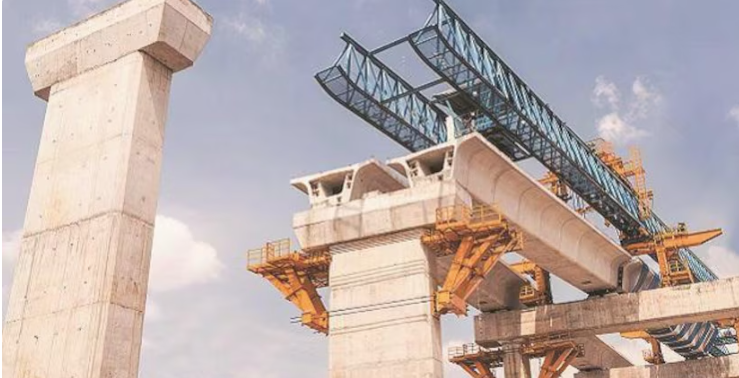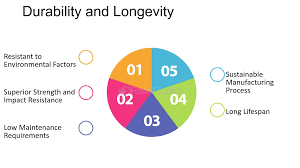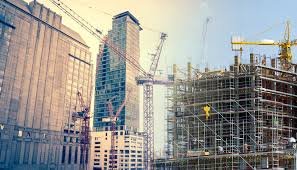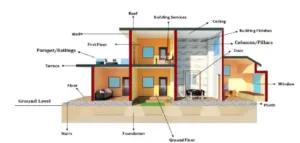The Importance of Quality in Government Construction Projects

Government construction projects, whether they are roads, schools, hospitals, or other public infrastructures, play a critical role in the development and well-being of society. These projects are often large-scale and are designed to serve the public for many years. However, the longevity, safety, and efficiency of such projects largely depend on one key factor: quality. Ensuring quality in government construction is not just a matter of technical excellence but a critical obligation to ensure public safety, economic efficiency, and long-term benefits.
1. Public Safety: The Primary Concern

Quality in construction is paramount to ensuring public safety. Government projects, from bridges to schools, are used by thousands of people daily. Poor-quality construction materials, improper planning, and cutting corners during the construction phase can lead to structural failures. Unfortunately, history has shown that when quality is compromised, the results can be catastrophic. Take, for instance, the tragic collapse of bridges or poorly constructed buildings, which not only result in loss of life but also in public distrust.
Ensuring that materials used in construction meet stringent safety standards and that contractors follow best practices can prevent such disasters. Regular audits, quality control checks, and adherence to regulations ensure that public safety remains the top priority.
2. Durability and Longevity of Structures

Government infrastructure projects are expected to last for decades, sometimes even centuries. The long-term sustainability of these projects depends on the quality of materials and workmanship used during construction. Poor-quality materials may deteriorate quickly, resulting in the need for frequent repairs, which can significantly increase maintenance costs.
For instance, if low-grade concrete is used in building a highway, it may develop cracks in just a few years, requiring costly repairs and causing disruptions to public services. Investing in high-quality materials and construction processes initially can lead to longer-lasting structures that require less maintenance, providing better value for taxpayers’ money.
3. Economic Efficiency

Governments are responsible for using public funds efficiently. Projects that are completed using high-quality materials and construction methods tend to have lower life-cycle costs. While initial costs may be higher, these investments reduce the need for expensive repairs, upgrades, and replacements in the future. Quality construction helps in avoiding cost overruns and delays, which are often caused by poor planning or substandard work.
Moreover, when quality is ensured, projects are completed on time, reducing the economic impact of delays. Delays in critical infrastructure projects, such as highways or airports, can have a ripple effect on local and national economies.
4. Sustainability and Environmental Impact

In today’s world, the environmental impact of construction projects cannot be ignored. Government projects are often scrutinized for their environmental sustainability. Quality construction can help reduce the environmental footprint of a project by using materials that are durable, sustainable, and sourced responsibly.
For instance, using energy-efficient building techniques and sustainable materials can significantly reduce a building’s long-term energy consumption and carbon footprint. Quality construction also ensures that projects are designed to withstand environmental challenges, such as floods, earthquakes, or extreme weather, which can become more frequent due to climate change.
5. Public Trust and Accountability

Government construction projects are funded by taxpayer money, and as such, governments are accountable to the public for how that money is spent. When the quality of construction is high, it reflects positively on the government’s commitment to providing value to its citizens. Conversely, poor-quality construction can lead to public outcry, scandals, and a loss of trust in government institutions.
Transparency, accountability, and adherence to quality standards are critical in maintaining public trust. Governments must ensure that contractors and builders follow all safety and quality regulations and that projects are completed according to the highest standards.
6. Enhancing the Overall Development of a Region

High-quality infrastructure projects can spur regional development. Good roads, efficient public transport systems, reliable water supply, and high-quality schools and hospitals all contribute to the overall development of a region. When these projects are built to last and function efficiently, they attract businesses, boost tourism, and improve the quality of life for residents.
On the other hand, poor-quality infrastructure hampers development. It can discourage investment, decrease property values, and result in economic stagnation.
Conclusion
Quality in government construction projects is not merely a technical requirement; it is a moral, economic, and social obligation. Ensuring that government projects meet the highest standards of quality guarantees the safety of the public, the efficient use of resources, and the long-term success of the project. Governments, contractors, and stakeholders must work together to prioritize quality at every stage of construction, from planning to execution, to ensure a brighter, safer, and more sustainable future for all.
By investing in quality, we invest in the future—creating structures and infrastructures that will serve generations to come with efficiency, safety, and reliability.










Add comment